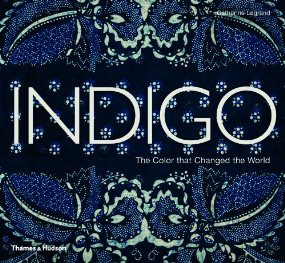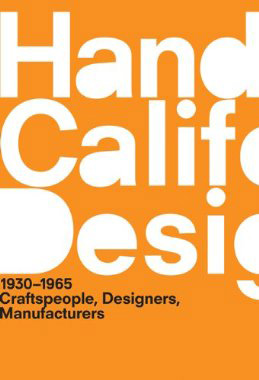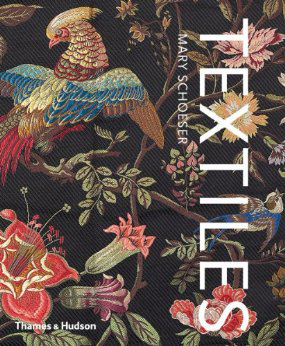A series of attractive books have wound up in our mailbox this spring. None are quite right for the beach, but each immerses a reader in another culture, locale or artist’s viewpoint — a bit of an adventure without leaving home. Even for fans of indigo, like me,  Indigo: The Color that Changed the World by Catherine Legrand (Thames & Hudson 2012) is a revelation. The book covers geographical regions (Japan, China, India, Laos and Cambodia, Africa, Central America and Europe — who knew?) where the ancient art is still practiced and indigo forms a part of the fabric of everyday life. The differences and similarities in the uses of indigo in these varied locales is fascinating. There are 500 glorious photographs, many of them a full page each. It’s not a reference in the typical sense as others have covered this material more comprehensively, but a visual one. I have found myself repeatedly returning to the book and leafing through the images again just to immerse myself in the patterns and hues.
Indigo: The Color that Changed the World by Catherine Legrand (Thames & Hudson 2012) is a revelation. The book covers geographical regions (Japan, China, India, Laos and Cambodia, Africa, Central America and Europe — who knew?) where the ancient art is still practiced and indigo forms a part of the fabric of everyday life. The differences and similarities in the uses of indigo in these varied locales is fascinating. There are 500 glorious photographs, many of them a full page each. It’s not a reference in the typical sense as others have covered this material more comprehensively, but a visual one. I have found myself repeatedly returning to the book and leafing through the images again just to immerse myself in the patterns and hues.
 A Handbook of California Design, 1930-1965, Craftspeople, Designers, Manufacturers, edited by Bobbye Tigerman (Los Angeles County Museum of Art and MIT Press 2013) offers more of a trip through time. Designed by acclaimed book designer Irma Boom, the pages look like newsprint and are handcut and edged in day-glo orange, the same color used for the cover. The photos and illustrations are nearly all in black and white and convey the design sensibility of the period, which was a halcyon period for design — California was “a breeding ground for new ideas to flourish without constraints,” and design benefited from its many institutions of higher learning and the technical and material innovations that WWII brought to the aerospace and defense industries. The connections and collaborations of the book’s subjects — from Harry Bertoia to Mary Ann DeWeese (Catalina Swimwear) to Charles and Ray Eames to Trude Guermonprez to Gertrud and Otto Natzler to browgrotta arts’ artists Ed Rossbach and Katherine Westpahl (featuring photos by Tom Grotta) and Kay Sekimachi — are mapped on a helpful chart. In each biography, the names of other subjects in the book appear in day-glo orange so that the reader can look for cross references. The biographies are brief and insightful.
A Handbook of California Design, 1930-1965, Craftspeople, Designers, Manufacturers, edited by Bobbye Tigerman (Los Angeles County Museum of Art and MIT Press 2013) offers more of a trip through time. Designed by acclaimed book designer Irma Boom, the pages look like newsprint and are handcut and edged in day-glo orange, the same color used for the cover. The photos and illustrations are nearly all in black and white and convey the design sensibility of the period, which was a halcyon period for design — California was “a breeding ground for new ideas to flourish without constraints,” and design benefited from its many institutions of higher learning and the technical and material innovations that WWII brought to the aerospace and defense industries. The connections and collaborations of the book’s subjects — from Harry Bertoia to Mary Ann DeWeese (Catalina Swimwear) to Charles and Ray Eames to Trude Guermonprez to Gertrud and Otto Natzler to browgrotta arts’ artists Ed Rossbach and Katherine Westpahl (featuring photos by Tom Grotta) and Kay Sekimachi — are mapped on a helpful chart. In each biography, the names of other subjects in the book appear in day-glo orange so that the reader can look for cross references. The biographies are brief and insightful.
 In Textiles: The Art of Mankind (Thames & Hudson 2012) Mary Schlosser sets out to explore the “continuum of creativity” that links ancient textiles to those created in the 21st century. Her chapter on structure, in which she argues that all textiles, even lengths of yardage, are three-dimensional objects takes an interesting look at non-tensional techniques, primarily basketmaking. The book contains a wealth of resources, including website addresses for artists and designers, and a staggering 1,058 illustrations. We were puzzled, though, by the author’s failure to mention browngrotta arts‘ website which has more than 1,000 images of textile art among the resources or list any of the 40+ catalogs on art textiles that we have published. Most disappointing — though she includes more than two dozen illustrations of work by Ed Rossbach, Katherine Westphal, Sara Brennan, Kay Sekimachi and Karyl Sisson, she fails to provide a website reference for any of them, even though there are images and information on each at http://browngrotta.com. Despite that omission — it’s a remarkable book, and well worth seeking out.
In Textiles: The Art of Mankind (Thames & Hudson 2012) Mary Schlosser sets out to explore the “continuum of creativity” that links ancient textiles to those created in the 21st century. Her chapter on structure, in which she argues that all textiles, even lengths of yardage, are three-dimensional objects takes an interesting look at non-tensional techniques, primarily basketmaking. The book contains a wealth of resources, including website addresses for artists and designers, and a staggering 1,058 illustrations. We were puzzled, though, by the author’s failure to mention browngrotta arts‘ website which has more than 1,000 images of textile art among the resources or list any of the 40+ catalogs on art textiles that we have published. Most disappointing — though she includes more than two dozen illustrations of work by Ed Rossbach, Katherine Westphal, Sara Brennan, Kay Sekimachi and Karyl Sisson, she fails to provide a website reference for any of them, even though there are images and information on each at http://browngrotta.com. Despite that omission — it’s a remarkable book, and well worth seeking out.
